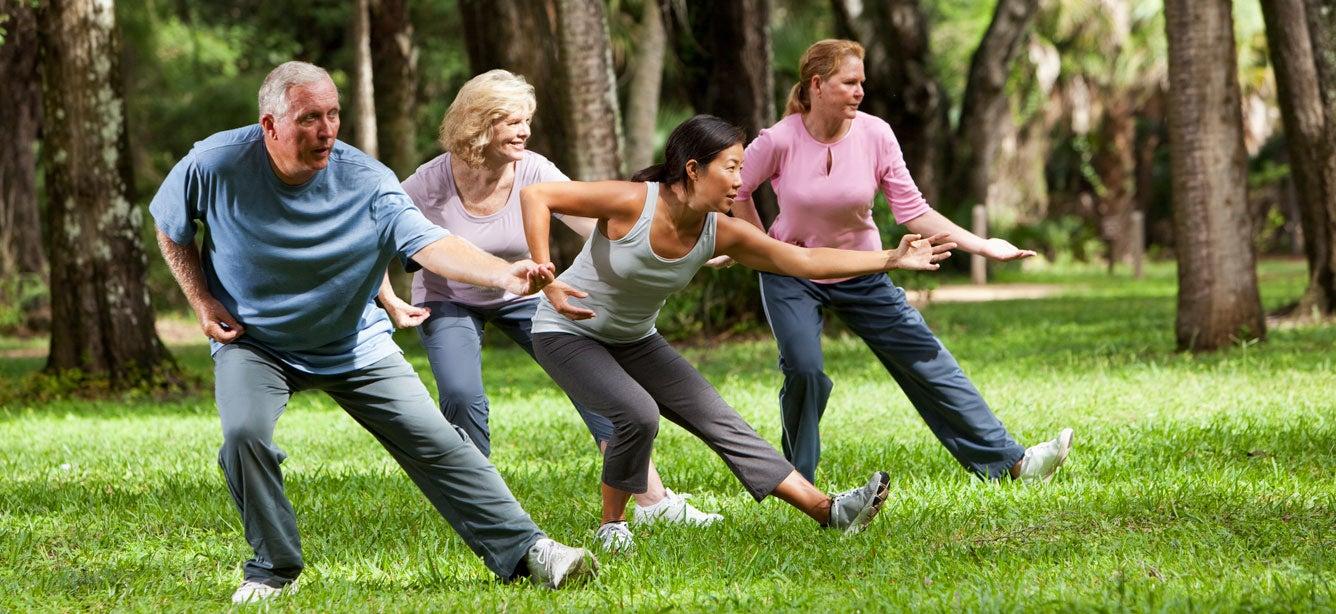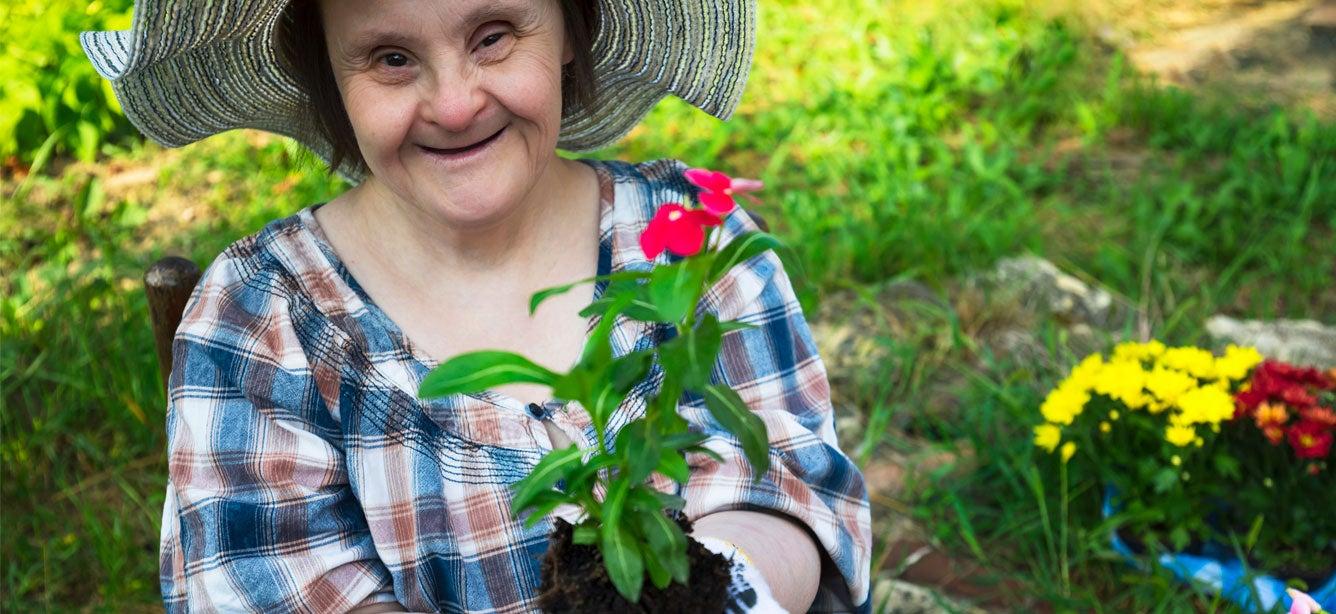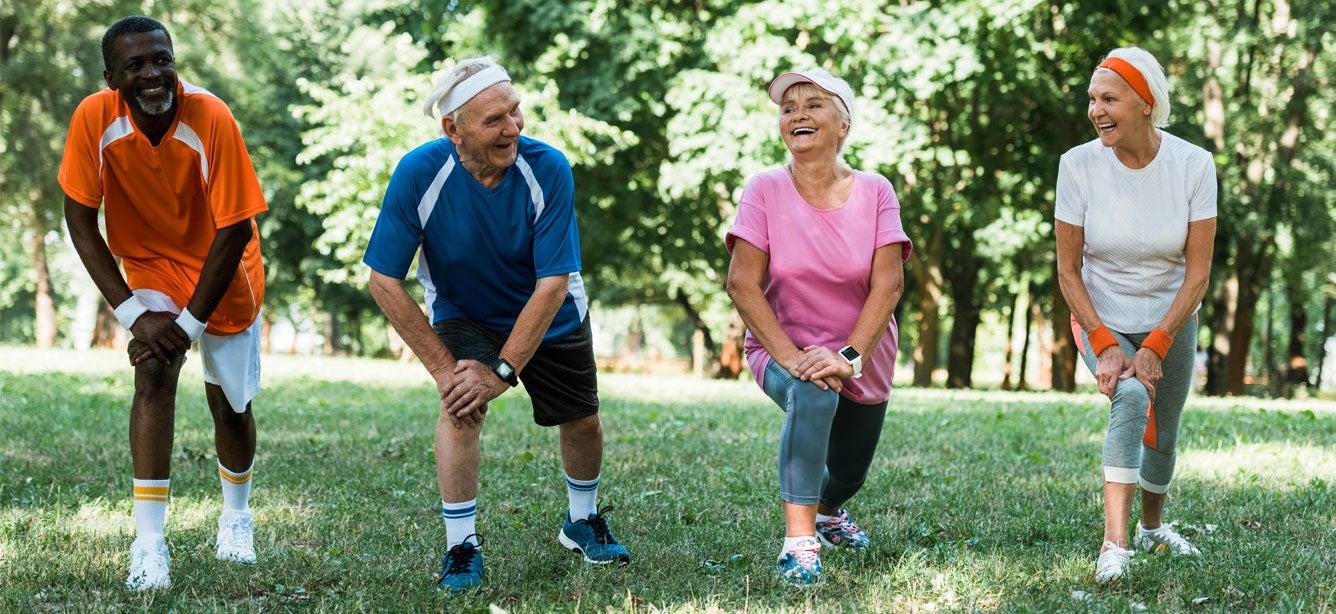Offering Chronic Disease Self-Management Education In Rural Areas
15 min read

Chronic Disease Self-Management Education (CDSME) programs have been offered throughout the United States, as well as in over 20 countries. Despite this success, the dissemination of evidence-based programs such as CDSME in rural areas can be challenging. A recent analysis of the reach of workshops in 45 states, the District of Columbia, and Puerto Rico revealed that 80% of areas lacking CDSME workshops were rural.1
The need for evidence-based programs is great among rural-residing older adults, who have higher poverty rates and poorer health than the urban elderly,2 and who frequently experience barriers to health care access. According to the Profile of Older Americans: 2014, individuals aged 65 and over constitute approximately 14.1% of the American population, with 19% of them living in non-metropolitan designated areas.3
Challenges commonly identified by organizations offering CDSME in rural areas include:
- Lack of transportation
- Long distances to workshop sites
- Recruitment and retention of CDSME leaders and master trainers
- Difficulty recruiting enough participants to fill the workshops
- Finding adequate space and accessible locations to hold the workshops
- Poor weather conditions impacting attendance and causing delays in workshop schedules
Helpful tips
Establish trust: In rural areas, personal relationships are key, and word-of-mouth using peer “ambassadors” is an effective recruitment strategy. The Centers for Disease Control and Prevention (CDC) developed the Ambassador Outreach Strategy to increase participation in self-management education workshops. Workshop graduates are trained to serve as “ambassadors” to promote the program and sign up participants through community presentations and word of mouth.5 Champions, who are a part of the community, can reach out to other community members with chronic conditions. You can identify champions by asking community members who they go to when they have a concern or need information. Current or past partners make excellent champions. Holding workshops at familiar sites such as senior centers, health centers, older adult housing, or local restaurants also helps—and may offer options for transportation.
Engage partners: Partners can help overcome resource limitations, provide referrals, assist with outreach, and in some cases, offer financial support (see “Build Partnership” section below). Partnerships provide access to known and trusted community members, such as service coordinators at senior housing sites, local public health personnel, Retired and Senior Volunteer Programs (RSVP) staff, grandparents raising grandchildren program workers, and previous CDSME participants.
Think about and plan for transportation: Transportation access is a significant problem in rural areas that can affect participation in CDSME programs. The Administration for Community Living/Administration on Aging (ACL/AoA) entered into a memorandum of understanding with the Federal Transit Administration (FTA) in January 2003. Additionally, the reauthorization of the Older Americans Act in 2006 contained requirements for states and Area Agencies on Aging to develop and implement comprehensive and coordinated systems for home and community-based services, including transportation. The memorandum and reauthorization both resulted in opportunities for the aging services network to strengthen coordination of transportation services with organizations funded by FTA grants. To maximize flexibility of funding and to enhance services for older adults, Older Americans Act grantees have the option to use Title III B funds to meet the match requirements for programs administered by the FTA, including the 5310 program funding for areas under 200,000 in population.6 In addition, FTA has a basic requirement of its formula grantees that for fixed route services supported with FTA funds, older adults and people with disabilities who present a Medicare card get half-price fares. If a Medicare card is presented during off peak hours, the charge will not be more than half the peak hour fare.
Consider cross-state/cross-region collaborations: Some states have benefited from collaborating with nearby states to reach people who travel across state borders. Collaborations across counties or service delivery areas can also help expand reach and maximize resources. Creative solutions include offering workshops a few times a year in the largest community in the area or encouraging carpooling from surrounding towns, rather than attempting to bring the workshops to areas with very small populations. In small towns, finding enough participants to successfully conduct a workshop can prove challenging. Training leaders and/or master trainers collaboratively can lower costs and increase participation. For example, holding one training in the center of a rural county, state, or region can be an effective approach.
Communication is key: Ongoing contact with leaders and participants is important for maintaining connections. If participants miss a session, it is important to find out why and encourage them to return. Stay in touch with leaders — value what they do and keep them connected to your organization.
Ongoing outreach and promotional messages are vital: Program marketing should be carried out through numerous venues, by multiple people (staff and volunteers), and at multiple times, since people generally do not act the first time they hear a message.
- Potential referral sources are banks, beauty salons, grocery stores, pharmacies, senior centers, physician offices, hospitals, and community-based organizations.
- Local fire departments, emergency medical services, and ambulance services are trusted referral sources and can help identify adults with chronic conditions.
- Social media and newspaper articles can increase visibility of programs.
- Many rural communities have a public access cable network that may be able to provide publicity. The Rural Farm District TV (RFDTV) is another potential partner.
- Sometimes the first workshop scheduled in a location is not as well attended as the ones that follow. Over-booking the first workshop, calling participants each week, reminding them of the workshop, and encouraging them to bring someone with them during the first two sessions helps keep participants invested.
Consider incentives: Finding sponsors for pre-paid lunch cards for participants’ meals on workshop days or arranging for meals at local restaurants for workshop participants may encourage registration and retention. Some states offer completer compensation to providers. If incentives are used, grantees should consider whether it is a necessary expense that furthers the project’s mission and how it will be sustained, e.g. sponsorship by a local business or service organization. Another incentive for local community agencies can be friendly competition—how many workshops can each organization achieve.
Use GIS: Mapping to identify the geographic distribution of leaders and implementation sites has been an important tool in several states and can be instrumental in revealing the areas of need for further site development. Behavioral Risk Factor Surveillance System data can also be useful for targeting areas with higher prevalence rates of chronic conditions.
Embed responsibility within organizations: When programs are included as a formal component of organizational operations, such as goals, policies, procedures, job descriptions, etc., there is greater likelihood of ongoing commitment and long-term sustainability. Many organizations in rural areas, such as Area Agencies on Aging and Community Action Agencies, have advisory councils and can embed CDSME and healthy lifestyles into their community planning processes.
Build partnerships
Some organizations may be obvious choices for partners, like community-based organizations and senior centers. Others may be non-traditional, for instance, restaurants and beauty salons.
Health care partners can provide accessible locations for holding workshops. They can also provide support by making referrals and training staff as leaders. They know their populations and are good referral sources. Collaboration can aid with achieving the patient-centered medical home designation by helping to meet the necessary self-management requirements. Health care partners may include:
- Federally qualified health centers, primary care health centers, patient-centered medical homes, and community health centers
- Local hospitals and clinics
- Community health and primary care associations
- Mental and behavioral health programs
- Disease-specific support groups, since members have already identified themselves as having chronic conditions and are seeking ways to manage those conditions
- The National Diabetes Prevention Program reach potential participants with diabetes for Diabetes Self- Management Program (DSMP) workshops
- Public health district offices
- Care management organizations
Rural health partnerships, including rural health networks, can help reach people with chronic conditions who live in rural areas. The networks often utilize community health workers to reach out to rural older adults and in some states, have sponsored workshops. Community health workers, some of whom may have been trained as leaders, can share information about CDSME workshops when making home visits for other purposes. They might also be able to connect those with chronic conditions to transportation options.
Every state has a State Office for Rural Health which is a focal point for rural health issues and links communities to state and federal resources to help develop long-term solutions to rural health problems.
For state-specific information on rural organizations and assistance, contact the Rural Assistance Center.
Community and faith-based organizations are well known and trusted in the community:
- Aging and Disability Resource Centers/Area Agencies on Aging, Community Action Agencies, Retired and Senior Volunteer Programs, and senior centers, are recognized resources for older adults and people with disabilities.
- Senior housing sites, whose residents are potential participants and leaders, may have space where workshops can be held.
- Other community-based organizations reach older adults as part of their larger mission, such as Cooperative Extension Services, Area Health Education Centers, and Regional Planning Commissions.
- In many rural areas, the church serves as the center of social activities. Churches and other faith-based organizations can spread the message about programs and offer a culturally appropriate setting for workshops.
- Consider collaborating with community organizations that offer other evidence-based programs to encourage attendees to sign up for a CDSME workshop as a next step.
- Non-traditional partners are well known and respected, with frequent contact with older adults and family members.
- Local restaurants and diners, beauty salons and barber shops, service clubs, bowling alleys, post offices, and libraries should be considered as potential partners.
- School districts in rural areas are often a focal point for all generations and can promote CDSME as an inter-generational activity. Children with chronic diseases can be a catalyst for change with a grandparent or other older adult.
Two success stories
Kentucky
In Kentucky, where the majority of the 120 counties are rural, they have been successful in delivering programs within much of the state. State-level leadership and support are provided through collaboration between the Department for Aging and Independent Living and the Department for Public Health.
Ability to leverage local resources from senior centers and local health departments in rural areas includes:
- Health departments provide referrals to programs.
- Senior center directors serve as lay leaders. Since the program requires two leaders, directors from multiple centers team up to lead workshops.
- The Aging and Disability Resource Center’s major role is referring older adults to workshops.
- Infrastructure development by leveraging existing partnerships with organizations such as community action programs and health care systems is an important component.
- A lesson learned is appropriate messaging to reach the target audience. In Kentucky, the message “Are you sick and tired of being sick and tired” has resonated with adults with chronic diseases. Calling the sessions “Living Well Workshops” 7 has also been an effective strategy for recruiting participants.
South Dakota
South Dakota is a mostly rural and frontier state. The goal of the CDSME leadership team is to provide outreach in all parts of the state. Key factors in their implementation of CDSME are listed below:
- There is shared state-level leadership with the Department of Health, State University Extension, and the Department of Social Services, each with defined roles. A steering committee and work groups have also been formed.
- Three major health systems in the state serve rural areas, and their reach is critically important in securing partners and workshop participants.
- The Extension Service has a rich history of being located in rural communities and proving services to communities of all sizes throughout the state.
- Four regional contacts serve as the lead for their respective areas. They organize lay leader trainings and offer workshops in specific areas that are interested in and prepared to implement CDSME.
- American Indians, who have been trained as Master Trainers, work with local tribes and all nine reservations in the state.
- A variety of marketing strategies and materials are used. Personal recruitment (face-to-face, phone calls, and utilizing the buddy system) has been the most effective approach.
- Funding streams include support from the Department of Social Services, in-kind assistance from several partners, and a suggested donation of $10 from workshop participants. Plans are underway to develop a Sponsorship Guide to assist partners with offering support such as monetary assistance, books, snacks, gift cards/honorariums, etc.
- Pending funding, the online version of programs will be introduced to reach rural populations. A traveling iPad lab, will be included as an innovative approach to share technology resources across the state.
Innovative approaches
In various parts of the country, studies have been conducted to test new approaches to increase the reach of programs among rural populations. The studies add to the body of knowledge to help practitioners as they consider ways to enhance their rural outreach efforts.
In Northern Ontario, Canada, a study examined whether a telehealth CDSMP would lead to better access to self-management programs in rural and remote communities for chronically ill adults.8 The study demonstrated improvements in: self-efficacy, exercise behavior, cognitive symptom management, communication with physicians, role function, psychological well-being, energy, health distress, and self-rated health.
The Alaska Division of Public Health in the Department of Health and Social Services collaborated with the Alaska Native Medical Center Diabetes Program to offer a distance delivery pilot project. CDSMP workshops were led from Anchorage for participants in rural communities using a poly-com system of communication with video conferencing. The Chugachmiut and Eastern Aleutian Tribes were the pilot project host sites. Participants rated the workshop highly and reported that they learned new tools to manage their chronic conditions. As a result of the workshop, they engaged in new activities such as walking and visiting with friends. They also limited snacks and had a higher level of confidence that they could live a healthy life with their chronic conditions.9
The Bringing Healthy Aging to Scale (BHAS) project in Wisconsin explored whether the use of the NIATx model10 could help trained new leaders in rural counties begin delivering Living Well (CDSMP) and Stepping On programs. Counties with BHAS coaches held more workshops and reached more participants within the first year. Those who completed Living Well had improved medical communication, fewer social role limitations, and fewer emergency visits and hospitalizations. Those completing Stepping On experienced fewer falls, improved falls risk behavior, and fewer emergency room visits.11
Resources
- The FrameWorks Institute issues research reports and advice on the need for better rural policies on topics such as health care and economic development.
- The Health Resources and Services Administration (HRSA) offers Small Health Care Provider Quality Improvement Program grants to provide support to rural primary care providers for the implementation of quality improvement activities, including improved health outcomes for patients, enhanced chronic disease management, and better engagement of patients and their caregivers. With their emphasis on chronic disease management, these rural primary care provider grantees could be important links for referrals and/or hosting workshops. They also fund the State Offices of Rural Health Small Hospital Improvement Program grants and many other opportunities for grants and collaboration.
- The Rural Assistance Center has toolkits and guides on topics such as transportation to support rural health care, the importance of health promotion and disease prevention in rural communities, and rural hospitals. Rural health networks are collaborative efforts of rural health care providers to pool resources and achieve common goals and objectives. Other pages on the HRSA website that may be helpful to organizations offering evidence-based programs in rural areas are:
- The National Advisory Committee of Rural Health and Human Services
- The National Organization of State Offices of Rural Health
- National Rural Health Resource Center
- Health Resources and Services Office of Rural Health Policy
- National Center on Senior Transportation
- National Rural Health Association
- New England Rural Health Round Table
- Cooperative Extension Services through the U.S. Department of Agriculture (USDA) are available through more than 100 land-grant colleges and universities. Some states collaborate with extension offices to help support CDSME programs. Common roles include providing outreach to identify people with chronic health conditions who can benefit from CDSME, helping to secure accessible workshop sites, and training staff as program leaders. USDA also has an Office of Rural Development, which seeks to improve the economy and quality of life in rural areas.
- Community Development Corporations are non-profit organizations created to support and revitalize communities, especially those that are impoverished or struggling. They offer assistance with the development of affordable housing and community services to meet local needs.
Sources
1. Samuel D. Towne, Jr, et al. The Reach of CDSME Programs to Rural Populations; GSA Annual Scientific Meeting, Washington, DC. Found on the internet at https://pubmed.ncbi.nlm.nih.gov/25964906/
2. Carolyn C. Rogers. The Older Population in 21st Century Rural America. Rural America. Fall 2002. Economic Research Service, U.S. Department of Agriculture. Found on the internet at https://www.ers.usda.gov/webdocs/publications/46984/19362_ra174_1_.pdf
3. U.S. Administration for Community Living.A Profile of Older Americans: 2014. Found on the internet at https://acl.gov/aging-and-disability-in-america/data-and-research/profile-older-americans
4. These states contributed suggestions and recommendations to this document: AK, CA, CO, GA, MA, MD, MI, NM, NY, OH, OR, SC, TX, VA, WA, WI
5. Centers for Disease Control and Prevention. Spread the Word: Marketing Self-Management Education Through Ambassador Outreach. 2013. Found on the internet at https://www.cdc.gov/arthritis/marketing-support/ambassador-outreach/docs/pdf/ambassador-guide.pdf
6. Administration for Community Living/Administration on Aging. Frequently Asked Questions about Transportation. Found on the internet at https://acl.gov/programs/transportation/transportation
7. Email program description from Jennye Grider, Health Program Administrator, Aging and Physical Disabilities Branch, Division of Quality Living, Department for Aging and Independent Living on Feb. 6, 2015
8. Bereket T. Increasing access to chronic disease self-management programs in rural and remote communities using telehealth. Telemedicine and e-health. June 2013. Found on the internet at https://www.ncbi.nlm.nih.gov/pmc/articles/PMC3696947/
9. Jaglal SB1, et al. Living Well Alaska: An Evaluation of a Distance Delivery Project April 2012. Contributed by Barbara Stillwater PhD, RN, Found on the internet at http://dhss.alaska.gov/dph/Chronic/Documents/Publications/assets/ChroniclesV4-1.pdf
10. NIATx is a model of process improvement specifically for behavioral health care settings to improve access to and retention in treatment
11. Implementation of Evidence-Based Prevention Programs in Rural Wisconsin Counties. Wisconsin Department of Health Services Webinar. Feb.13, 2015. Meg Wise, PhD, MLS; Melissa Dattalo, MD, MPH; Betsy Abramson, JD; Anne Hvizdak; Jessica Purdy



